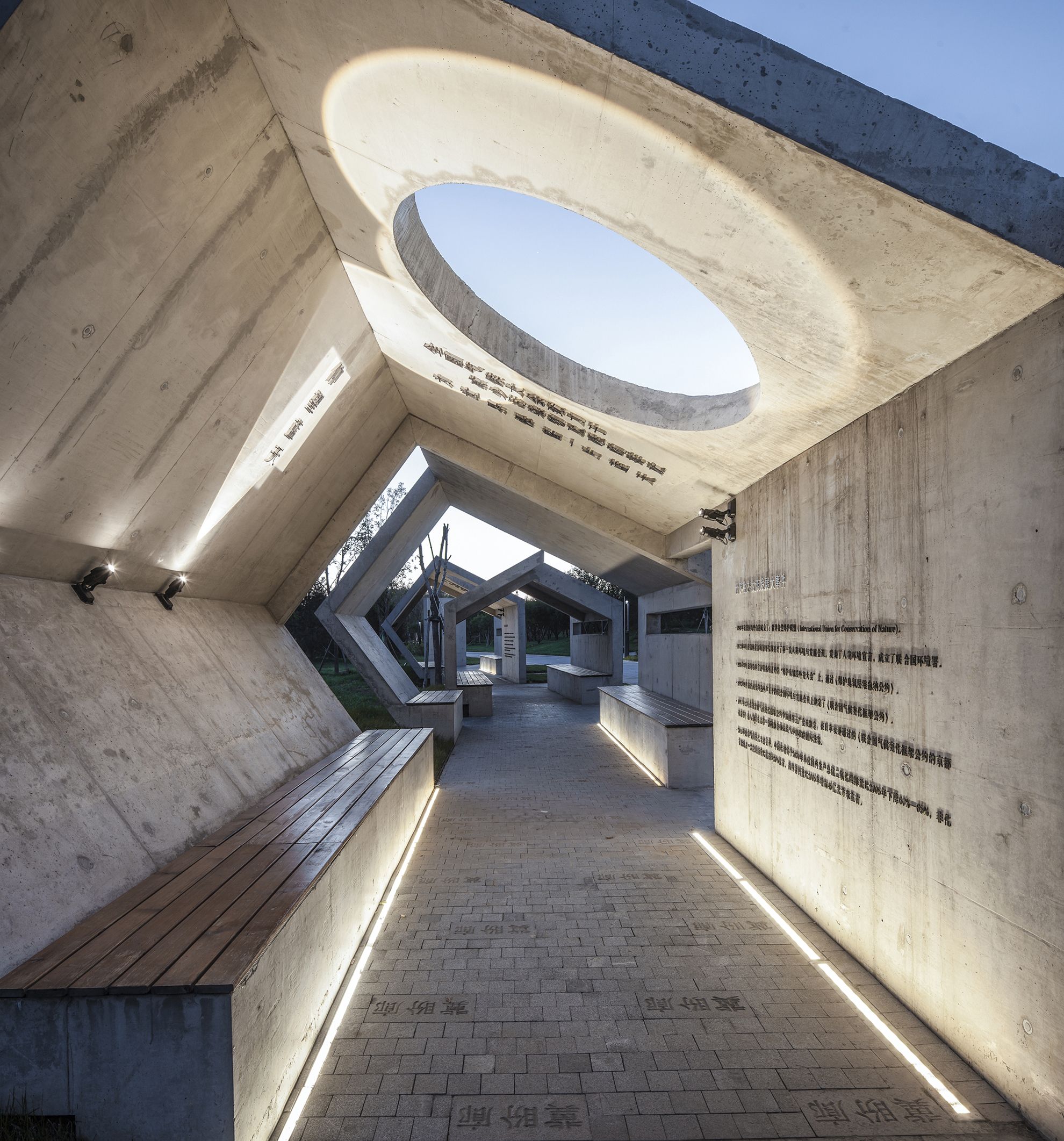
Liu Garden, Chinese Storytelling Museum and Daxing Ecological Civilization Education Park
In this article we talked to Mr Liu Tingjie (Peter) of Cobblestone Design about their 2018 award-winning designs — Liu Garden and Chinese Storytelling Museum, winning in Architectural Design / Cultural Architecture, and in Landscape Architecture / Gardens; and Daxing Ecological Civilization Education Park, winning in both Landscape Architecture / Installations & structures and Landscape Architecture / Educational.
For fifteen years, Cobblestone, registered in Canada and China, has adhered to the value guidelines of urbanism and completed a comprehensive solution of urban design, architecture and landscape from the design point of deep concern for urban life and events. Over the past decade, the research and practice of horizontal urbanism has highlighted the systematic cohesion and interaction among cities, buildings and landscapes, which has become the direction of our great interest. We strive to provide design research and services beyond the drawing space and tirelessly seek the basis and value of design. At the same time, we are also very concerned about how to mediate the relationship between modernity and our own cultural sources, which is dialectical and conciliatory.
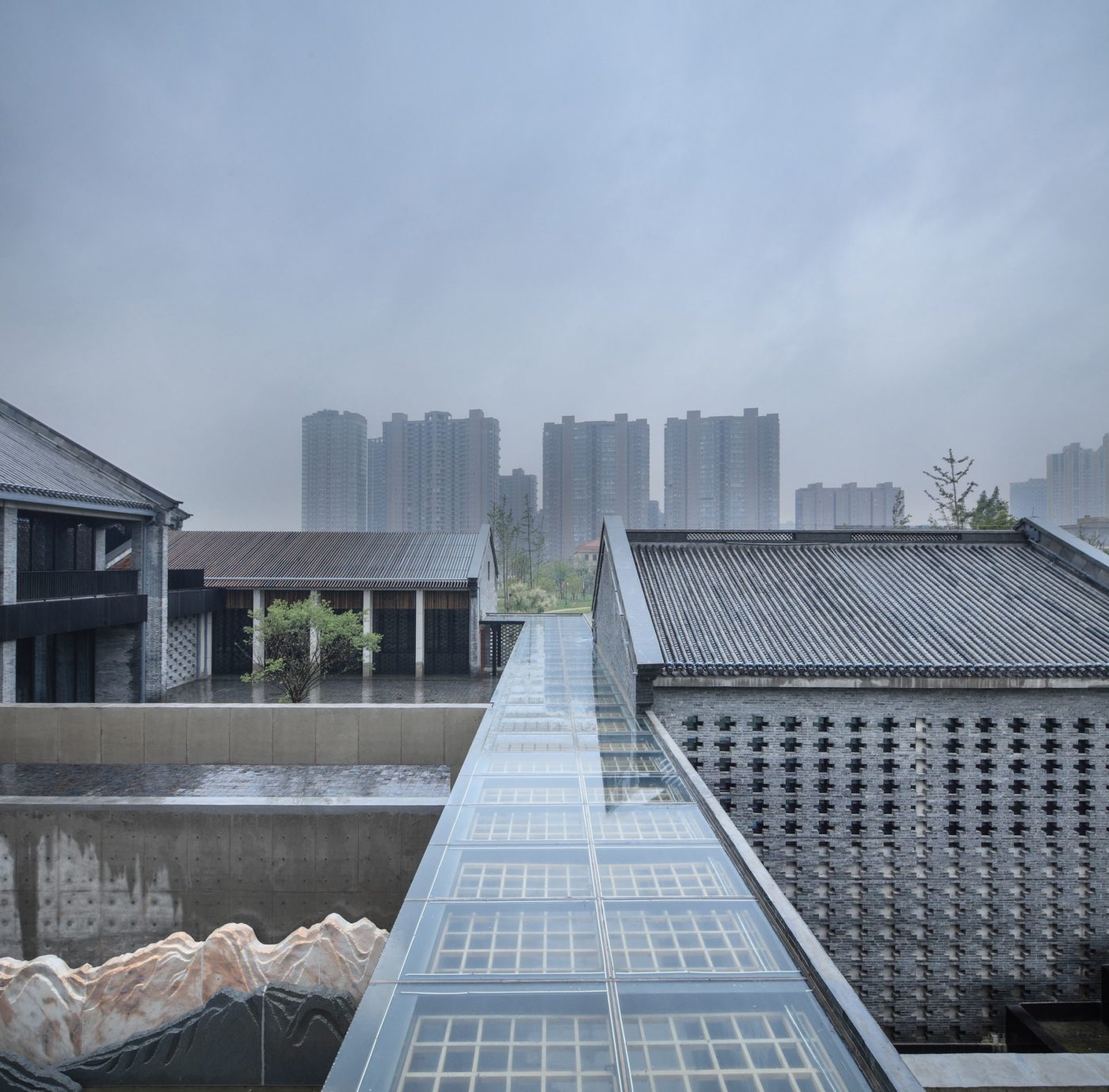
Mr Liu Tingjie, the chief architect, received his Master of Architecture (M. Arch) from Manitoba University in his early years. He is a member of the Royal Canadian Architectural Society and the Chinese Architectural Society and an independent architect. Mr Liu Tingjie has long been concerned about the interdisciplinary research and design practice of cities, buildings and landscapes in the context of urbanism, and has accumulated a large number of thoughts, articles and design works.

The overall plan of Liu Garden, which covers an area of 68,000 square meters, is divided into three parts: the original ecological restoration area – natural ecological restoration; the traditional cultural deduction area – commentary Museum and cultural landscape tourist area; and the leisure and sightseeing area – citizen leisure tourist area. Designers plan to separate Liu Garden from the southern commercial district, implying the ideal of “breaking away” from Chinese culture. The Chinese Storytelling Museum is the most important building in Liu Garden. It is the only thematic museum in China that comprehensively introduces the art history and artists of Book Review and Commentary. The Museum covers an area of 2,237 m2 and covers an area of 1,100 m2. It has two and a half floors above ground and one floor below ground.
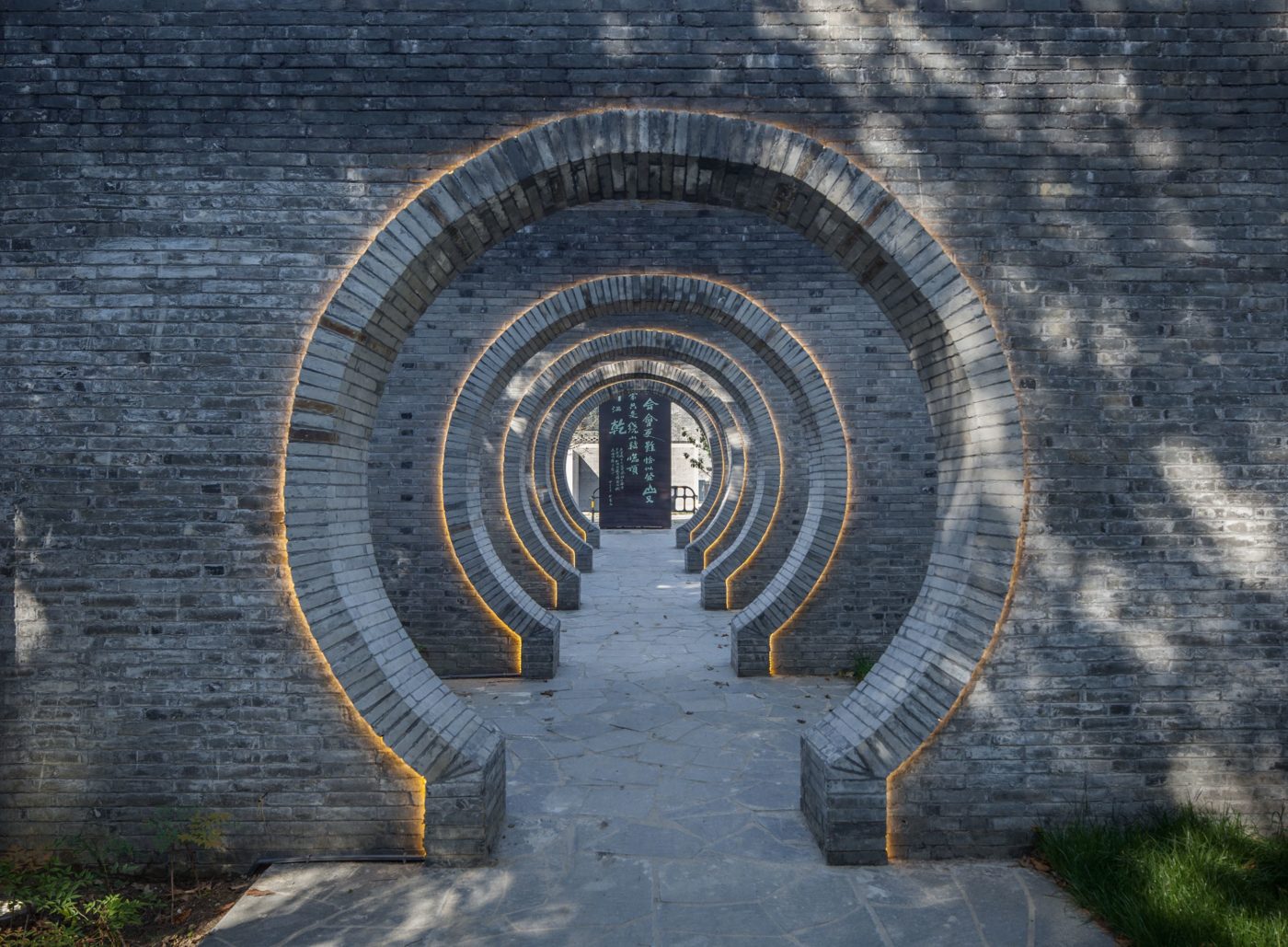
Storytelling is a traditional art. We are more cautious in interpreting the space state of the museum. We did not directly adopt the beam and pillar and space system of traditional residential buildings, but we maintained the typical decoration of the roof and flowers of gabbled roof residential buildings; at the same time, we used the form of contemporary flowing space composed of two courtyards to meet the streamline needs of the internal viewing and exhibiting crowd. This mediation truly reflects our thinking on the inheritance of traditional art: at the same time facing the challenges of self-preservation and self-challenge. We put forward the idea of “prudent innovation”, a new regionalism with self-preservation and revision, to guide the creation of Liu Garden ‘s “view”.

The main challenge for Liu Garden was to tell a traditional story to modern people to solve the contradiction between traditional modernity and modern traditionality. I believe the most outstanding part of Liu Garden is how the two staggered courtyards form a flowing spatial model, and carefully explore the contemporary reappearance of traditional space and form. I am most proud of the presentation of spatial and material properties.

For Daxing Ecological Civilization Education Park the brief was as follows: Daxing Ecological Civilization Education Park is located in the north of Daxing District, south of the South Fifth Ring Highway and the north of the New Media Industrial Park, which is close to the Feng River, with a total area of about 141 456㎡. Daxing Ecological Civilization Education Park, which is built in the green reproduction area of the urban-rural joint area, has a linear narrative structure, with the contemporary simple space-shaping method to complete the functions and enlighten sublimation for the park. The grey building group is highly involved in the narration of the place. This not only constructs the logic and sequence under the frame of thematic narration but also creates a happy and romantic viewing experience, like a continuous hand scroll of garden paintings, showing the unity of narration and poetry.
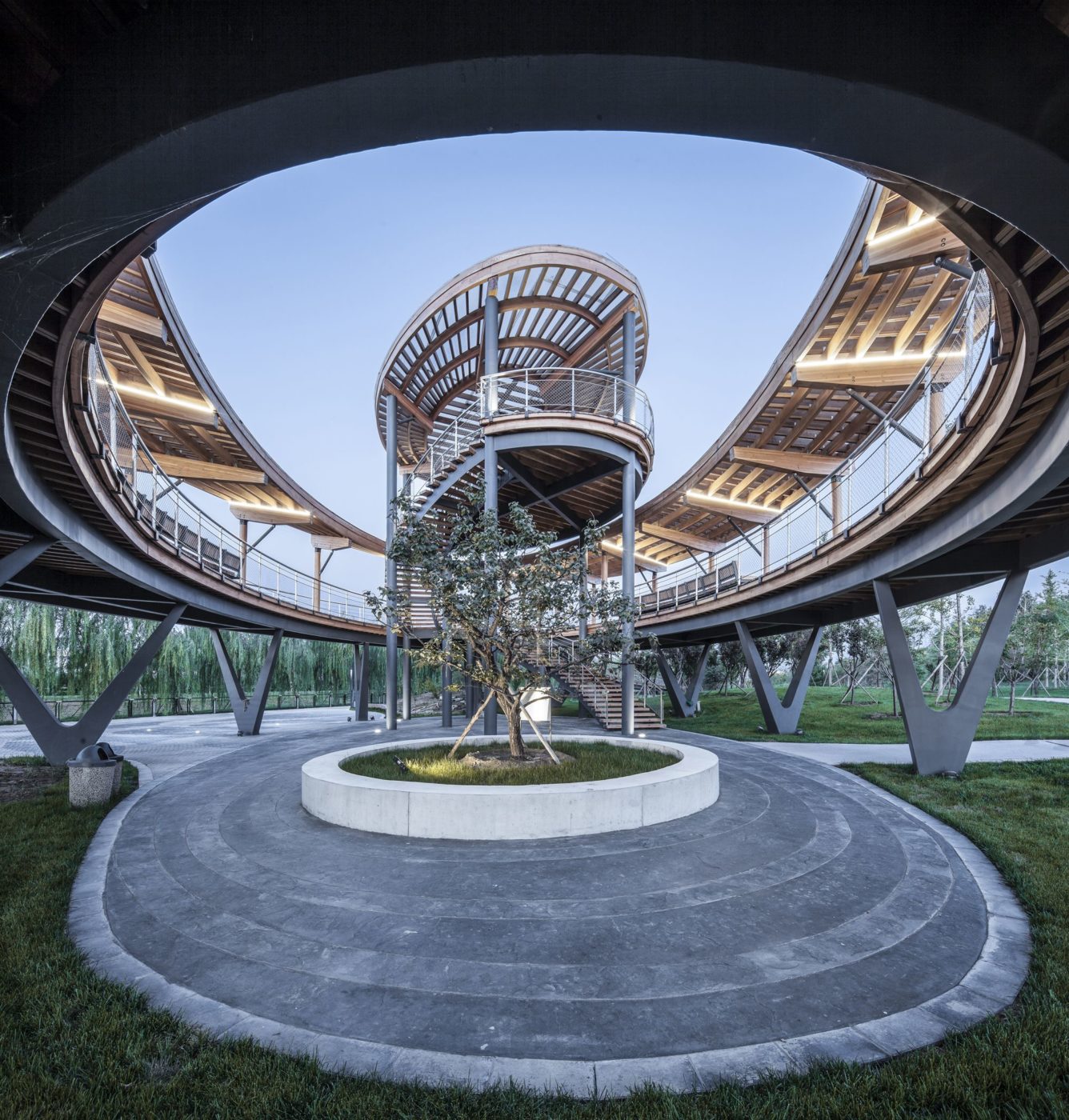
One form of Chinese garden painting is called hand scroll or horizontal scroll, “when one reads while rolling it from the right to left, hand scroll typically provides a pictorial analogue to the more linear or discursive experience of entering the garden through a gate shown at the beginning of the scroll, walking leisurely through it and observing it principal features, and leaving through another gate at the end. (Gao Juhan, p21) Daxing Ecological Civilization Education Park is like a slowly unfolding handroll, continuous different sceneries constitute a complete narrative park. When the form of content and statement forms a complete structure, it becomes “narrative.” From west to east, Daxing Ecological Civilization Education Park arranges four related gardens according to narrative logic, which are named Imagination Park, Wisdom Park, Knowing and doing under the feet Park and Endeavour Park respectively. It presents a linear progressive relationship between “Natural Imagination”, “Universal guidance”, “Education Memorial” and “Hard Practice,” and runs through a primary garden road and a circular ecological trail respectively.
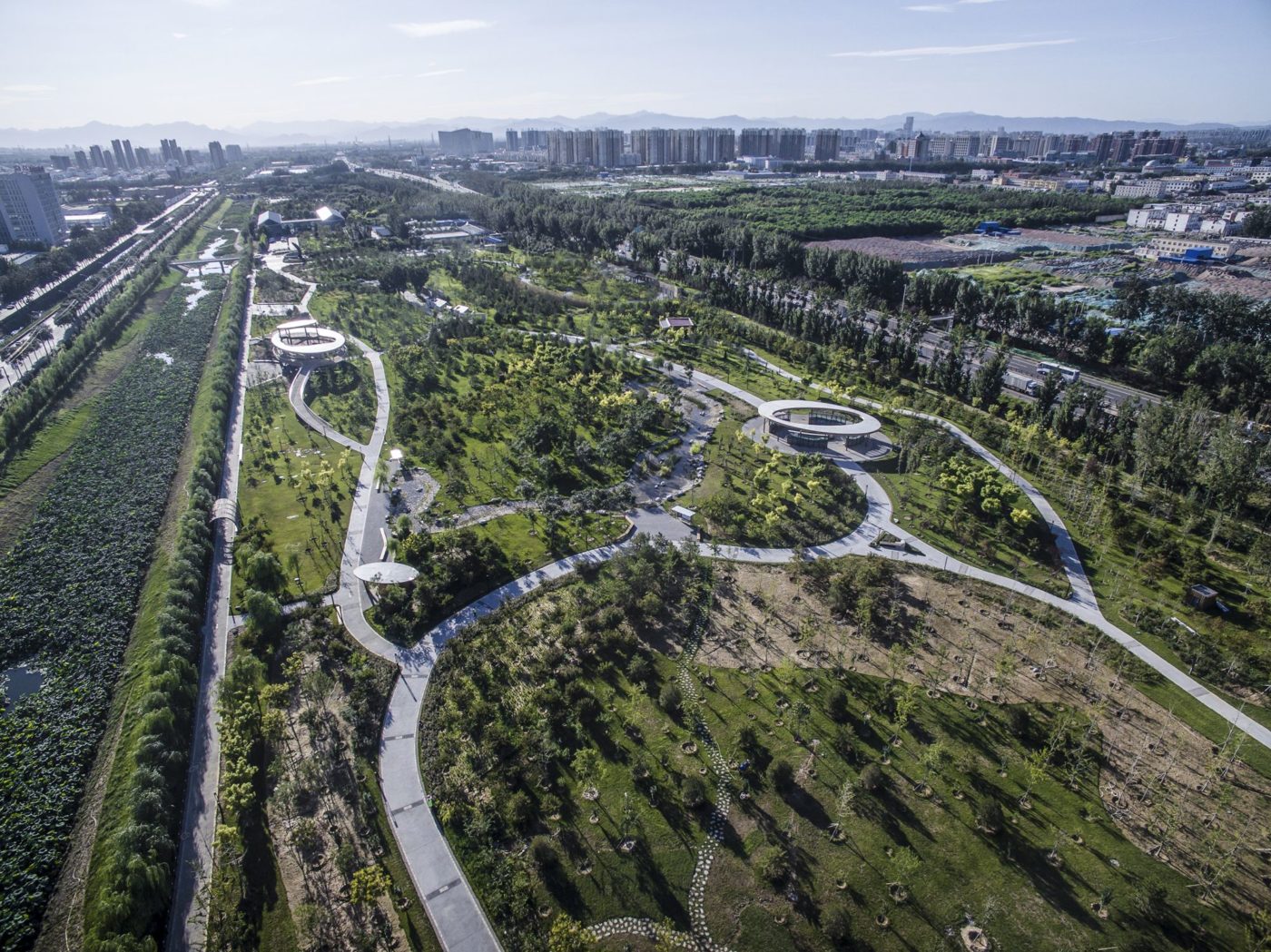
The main challenge for Daxing Ecological Civilisation Education Park was to tell a story of ecological civilization in large-scale horizontal space. The most innovative part of Daxing Ecological Civilization Education Park was creating large scale horizontal landscape space through narrative poetry. I am most proud of the narrative structural relations and the presentation of natural characteristics of materials.
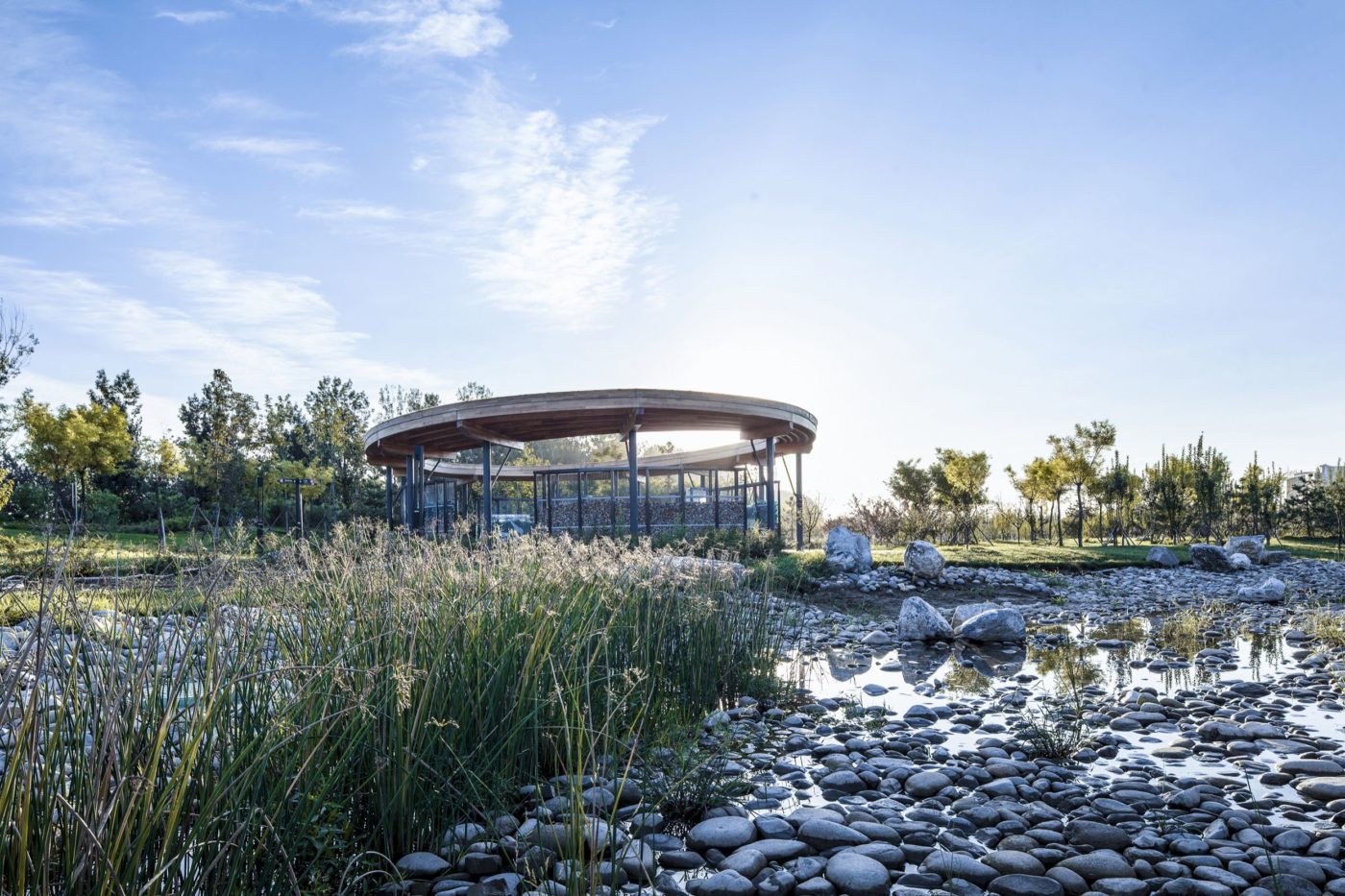
I loved painting since I was a child, and I was fascinated by urban space in junior high school, which led me to the path of professional architects. Eisenman has been the greatest influence on me in the past 30 years, whether in his early deconstructionist ideas or in recent years, he has paid attention to the thinking and practice of architectural continuity in recessive cultural symbols and natural context. Over the past 18 years, Koolhaas’s cutting-edge books and architecture, as well as Kenneth Frampton’s ideas about critical regional ideas, have also influenced my thinking. Of course, there are many other people and books, such as Jane Jacobs, Keven Lynch, Hadid, and Jicheng, a master of gardening in the Ming Dynasty.
I would love to design a library in a city or community. I have been to Koolhaas’s Seattle Library many times and she’s beautiful; of course, there are some perfect interior spaces, including perfect facilities and equal communication opportunities for the homeless.
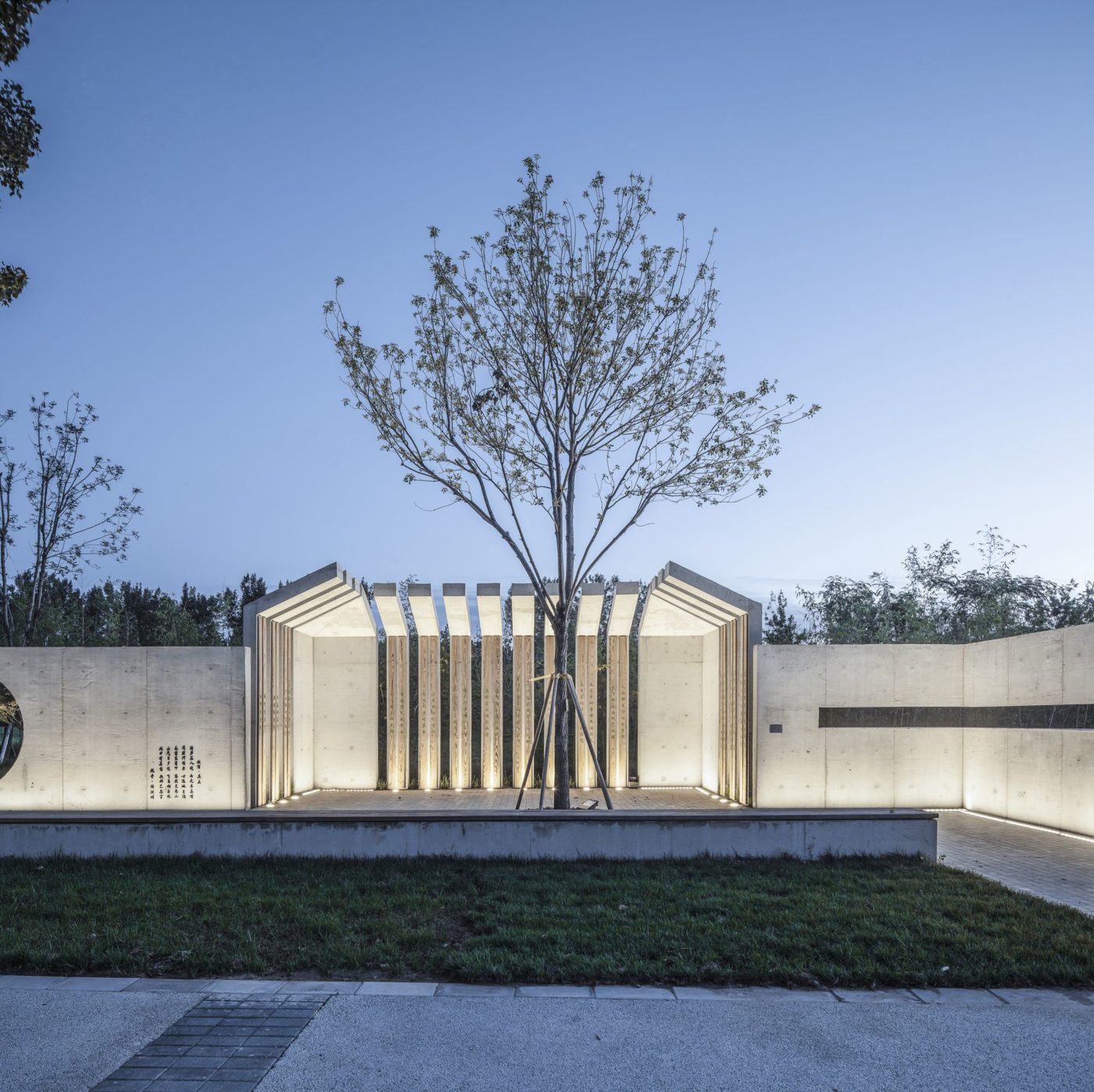
This is a prophecy from the heart: AI and Cyberspace will change the traditional way of working and the role of the architect, in addition to the aesthetic and intuition and this change will happen in the next 50 years. In order for architecture to make a real difference to society and the world, I believe you must deeply feel the changes in your lifestyle in your cultural circle. You become your own, also became the world.
It’s an honor to win this award. Thank you, AMP, very much. It’s a temporary pleasure, like watching scenery on both sides of a fast train, like movie clips that are fleeting. To a great extent, international awards have enabled us to elaborate on my understanding of our city and living space, which is meaningful for me personally and for my company.
We would like to thank Mr Liu Tingjie for answering our questions in such depth and for providing us with much to think about, not just about two award-winning projects, but also about the discipline at large.